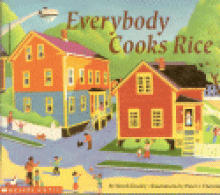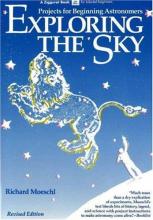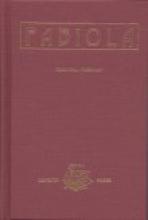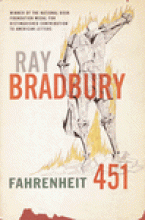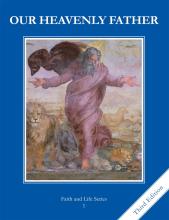No name
Everybody Cooks Rice
Excellence in Literature: American Literature
Excellence in Literature: British Literature
Exiles of the Cebenna
Exiles of the Cebenna was originally written in the 19th century and pretends to be the long lost journal of a priest from the 3rd century. The language is delightful and the story very moving. It takes place at the time of the persecution by Decius, a particularly brutal time of martyrdom. The people of Arles, France have been told that they must appear at the arena to give sacrifice to the Roman gods. If they refuse, they will be tortured and killed. A small group of Christians under the leadership of the priest telling the story plan an escape through a secret tunnel. The Bishop however, must stay behind.
On the day of his appointed appearance, the Bishop quails under the torture and makes the sacrifice. He is utterly devastated that he could not bear witness to his faith and has failed his people. Hearing of this, his daughter who was one of the escapees, tries to return to see her father and comfort him. Since the tortures, the people and officials are subdued by the horrific spectacle, and the Christians feel that it is now safe to travel in the open. They are recognized however and taken to the prison. The daughter is told that she must sacrifice. She refuses, and in the most moving scene in the book begins her torture. Her life is spared at the last moment, but she does eventually die from her wounds. Her death indeed helps her father to proclaim his faith, and, according to the epilogue, he is also eventually martyred.
Although, a student may have trouble getting into the language of the story at first, it does become more readable and draws the reader in. The ending is worth every word of the rest of the book. It gives a truly inspiring image of the trials and glory of the martyrs.
Recommended for 7th grade and up.
Exploring the Sky
As your student begins to look skyward and ask questions, take them in one hand and this book in the other! With this book, an assortment of ordinary household things, binoculars or a telescope, and lots of time you can teach a fascinating, hands-on course in beginning astronomy for an entire year. Exploring the Sky is not a textbook. It isn't a storybook. It IS a living book guide to exploring the heavens with an interesting mix of history, biography, folklore, legend, science facts and science fiction, and even some mathematics and art. Obviously written by someone who loves the subject, Exploring the Sky makes the subject come alive.
Introducing a broad range of subjects, this book is organized into seven lengthy chapters with four topical sections each, and a total of seventy-two projects. This is hands-on, time-consuming, attention-grabbing, messy science, not read-about-it science! These sections begin with background information on the topic and at least one project, although most sections include several projects. For example, Chapter 5 is titled "Sky-Gathering Tools". Section 3 is titled "Cameras" and includes presentations on photography with a project on photographing stars and planets, the photoelectric effect, and computers with a project on showing how images are transmitted. This is followed by "Observations", critical thinking questions designed to elicit connections from the student. Often, there are suggestions for additional books to read and browse on the topic as well. Many of the suggested books have copyright dates between 1960 and 1980 and would be best located at the library. It is possible to simply dive in, choose a chapter or a section of a chapter, and begin exploring. The toughest decision is where to begin! How difficult it is to choose among constructing a sundial, demonstrating how the colors of the sky are make, experimenting with prisms, making a model of a black hole, or creating craters on Mercury.
As with all secular books on astronomy, there are references to millions of years of time, but there is no particular emphasis on evolution. Creation legends are retold from cultures as diverse as those of Babylonia, the Norsemen, Mexico, the Maori, and Greece but there is no mention of Christian teaching. Catholic children at this age level shouldn't have trouble making essential distinctions and will probably find value in contrasting this section with the book of Genesis and other sources of Catholic teaching.
This book is noted on the cover as being for "talented beginners", but it is for beginning astronomers who are middle-school-aged students and above, not beginning students in the elementary grades. Basic skill with multiplication and division, as well as the ability to use reference tables that are provided in the book, is necessary to understand some of the projects. Although there are numerous diagrams and sketches, the only thing missing is color photographs. I'm guessing that printing in black and white contributes to keeping such a valuable book so inexpensive. Thus, the only supplements that I suggest are Internet photographs (such as those on the NASA site) or books in Seymour Simon's space series.
Eyewitness: Astronomy
Although most books in the DK Eyewitness series are at least slightly problematic in the text, our family enjoys a number of them entirely for the sake of the pictures. Eyewitness: Astronomy is one of the ones I wouldn't bother with even for the pictures. Although there are many beautiful photos, the book overall is both disappointing and even problematic in places. In looking for a book about astronomy for my children, I wanted something that covered the facts about stars, planets, galaxies, etc., with beautiful photos and interesting text about what science knows (or believes) so far - particularly from the starting point of what children are able to see from their own observation or from straightforward photos and illustrations.
Although there is a certain amount of basic science covered here, I thought there was an exorbitant emphasis on astrology and how it developed into astronomy and a lot of history of science details (some of which is disputable.) I thought the DK Space Encyclopedia (reviewed here) was much nicer (and certainly more thorough) in what it covered and even showed a much fairer hand in dealing with Church-related issues such as Galileo.
Fabiola, or the Church of the Catacombs
Fabiola is a Roman lady, a "noble pagan" of intelligence, virtue and spirit, who like many Romans of the time has heard nothing but false, vile reports of Christian beliefs and practices. At the same time she can't help contrasting the behavior of her young cousin, Agnes, her friend Sebastian, and her slave Syra with the corrupt brutality so rampant in pagan society. Without knowing that they are Christians, she senses that they are in light while she is still in darkness.
While Fabiola and her journey towards conversion is the focal point of the book, there are as many turns and side passages in the plot as there are in the catacombs. There is a subplot concerning an immature Christian who falls into apostasy and betrays his friends - but repents and is restored to grace. Another subplot concerns a martyr's son who longs to follow in his father's footsteps. A chapter is devoted to explaining the purpose of the catacombs and how the inscriptions came to be written within them. There is a lot to be learned from this book about an important time in Christian history. The descriptions of the martyrs' deaths are realistic, and because of this, and the length and ornate style of the book, it might be best read by teenagers and adults.
Originally published in the late 19th century, reprinted by Lepanto Press
Fahrenheit 451
Faith and Life Religion Series
This is a very popular religion series for Catholic homeschoolers. There are probably many reasons for this: they're reasonably priced, they're filled with beautiful selections of fine religious art, and they're unquestionably orthodox. The series incorporates questions from The Baltimore Catechism for memorization. Some homeschoolers don't like the brief content (the text contains approximately one lesson per week - although there is also a work book, teacher's manual and extensive resource guide available for each grade). Others are glad to have a solid text for the backbone of their religion curriculum that leaves room for lots of supplementing with Saints Stories, Bible study, memorization, service projects, devotions, celebrations of holy days, etc.
Please Note: The Seventh Grade book contains an examination of conscience in the back that touches upon sins that are unfortunately common among the type of youngsters that this series was aimed at (largely public school students who attend CCD) but might be better avoided with innocent homeschooled children. I don't believe that the series needs to avoided for this reason, but the segment, and in particular the word "masturbation" should probably be avoided at this age level.
Update: This series has been updated in the 2000s, with expanded activity books. It was updated again in 2016 and is now available as an online program with eBooks as well.
This series is available from most of the Catholic homeschool suppliers including many on our list of Favorite Suppliers.
Original series 1980s; Second Edition 2000s; Third Edition 2016.

